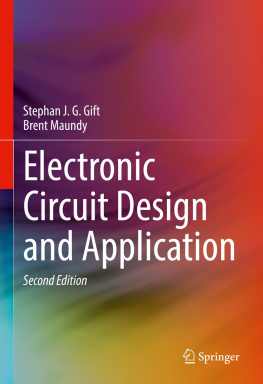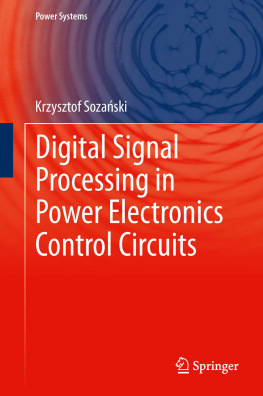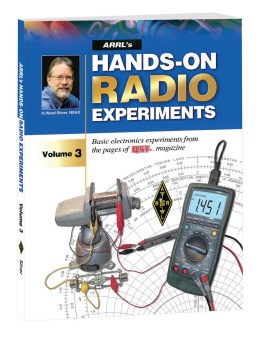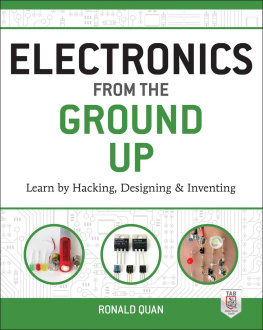About the Author
Ronald Quan, a resident of Cupertino, California, has a BSEE degree from the University of California at Berkeley and is a member of SMPTE, IEEE, and AES. He has worked as a broadcast engineer for FM and AM radio stations, and for over 30 years he has worked for video and audio equipment companies (Ampex, Sony Corporation, Monster Cable, and Macrovision). Mr. Quan designed wide-band FM detectors for an HDTV tape recorder at Sony, and a twice color subcarrier frequency (7.16 MHz) differential phase measurement system for Macrovision, where he was a principal engineer. Also, at Hewlett Packard he developed a family of low-powered bar code readers that drained a fraction of the power consumed by conventional light pen readers.
Mr. Quan holds at least 70 U.S. patents in the areas of analog video processing, low-noise amplifier design, low-distortion voltage-controlled amplifiers, wide-band crystal voltage-controlled oscillators, video monitors, audio and video IQ modulation, in-band carrier audio single-sideband modulation and demodulation, audio and video scrambling, bar code reader products, and audio test equipment. In 2005 he was a guest speaker at the Stanford University Electrical Engineering Departments graduate seminar, talking on lower noise and distortion voltage-controlled amplifier topologies. In November 2010 he presented a paper on amplifier distortion to the Audio Engineering Societys conference in San Franciscos Moscone Center.


Copyright 2013 by The McGraw-Hill Companies, Inc. All rights reserved. Except as permitted under the United States Copyright Act of 1976, no part of this publication may be reproduced or distributed in any form or by any means, or stored in a database or retrieval system, without the prior written permission of the publisher.
ISBN: 978-0-07-179971-3
MHID: 0-07-179971-0
The material in this eBook also appears in the print version of this title: ISBN: 978-0-07-179970-6, MHID: 0-07-179970-2.
All trademarks are trademarks of their respective owners. Rather than put a trademark symbol after every occurrence of a trademarked name, we use names in an editorial fashion only, and to the benefit of the trademark owner, with no intention of infringement of the trademark. Where such designations appear in this book, they have been printed with initial caps.
McGraw-Hill eBooks are available at special quantity discounts to use as premiums and sales promotions, or for use in corporate training programs. To contact a representative please e-mail us at bulksales@mcgraw-hill.com.
McGraw-Hill, the McGraw-Hill Publishing logo, TAB, and related trade dress are trademarks or registered trademarks of The McGraw-Hill Companies and/or its affiliates in the United States and other countries and may not be used without written permission. All other trademarks are the property of their respective owners. The McGraw-Hill Companies is not associated with any product or vendor mentioned in this book.
Information contained in this work has been obtained by The McGraw-Hill Companies, Inc. (McGraw-Hill) from sources believed to be reliable. However, neither McGraw-Hill nor its authors guarantee the accuracy or completeness of any information published herein, and neither McGraw-Hill nor its authors shall be responsible for any errors, omissions, or damages arising out of use of this information. This work is published with the understanding that McGraw-Hill and its authors are supplying information but are not attempting to render engineering or other professional services. If such services are required, the assistance of an appropriate professional should be sought.
TERMS OF USE
This is a copyrighted work and The McGraw-Hill Companies, Inc. (McGraw-Hill) and its licensors reserve all rights in and to the work. Use of this work is subject to these terms. Except as permitted under the Copyright Act of 1976 and the right to store and retrieve one copy of the work, you may not decompile, disassemble, reverse engineer, reproduce, modify, create derivative works based upon, transmit, distribute, disseminate, sell, publish or sublicense the work or any part of it without McGraw-Hills prior consent. You may use the work for your own noncommercial and personal use; any other use of the work is strictly prohibited. Your right to use the work may be terminated if you fail to comply with these terms.
THE WORK IS PROVIDED AS IS. McGRAW-HILL AND ITS LICENSORS MAKE NO GUARANTEES OR WARRANTIES AS TO THE ACCURACY, ADEQUACY OR COMPLETENESS OF OR RESULTS TO BE OBTAINED FROM USING THE WORK, INCLUDING ANY INFORMATION THAT CAN BE ACCESSED THROUGH THE WORK VIA HYPERLINK OR OTHERWISE, AND EXPRESSLY DISCLAIM ANY WARRANTY, EXPRESS OR IMPLIED, INCLUDING BUT NOT LIMITED TO IMPLIED WARRANTIES OF MERCHANTABILITY OR FITNESS FOR A PARTICULAR PURPOSE. McGraw-Hill and its licensors do not warrant or guarantee that the functions contained in the work will meet your requirements or that its operation will be uninterrupted or error free. Neither McGraw-Hill nor its licensors shall be liable to you or anyone else for any inaccuracy, error or omission, regardless of cause, in the work or for any damages resulting therefrom. McGraw-Hill has no responsibility for the content of any information accessed through the work. Under no circumstances shall McGraw-Hill and/or its licensors be liable for any indirect, incidental, special, punitive, consequential or similar damages that result from the use of or inability to use the work, even if any of them has been advised of the possibility of such damages. This limitation of liability shall apply to any claim or cause whatsoever whether such claim or cause arises in contract, tort or otherwise.
Contents at a Glance
Contents
Preface
Ever since the invention of amplitude-modulated (AM) radio during the beginning of the twentieth century, there has been a unique interest on the part of hobbyists to build various types of receivers from the crystal radios of that era in the 1900s to the software-defined radios (SDRs) in the twenty-first century. In between the crystal receivers and SDRs are the tuned radio-frequency, regenerative, reflex, and conventional superheterodyne receivers. This book will cover these types of radios from will illustrate two types of front-end circuits for SDRs using analog and sampling methods to generate I and Q signals.
This book actually has two personalities. The first 12 chapters are organized as a do-it-yourself (DIY) book. Starting from , a coil-less superheterodyne radio design is presented.
Throughout based on their course work.
The last half of the book from are presented in a step-by-step manner as if the equations or formulas are being written on a white board or chalk board during a lecture. Therefore, this book tries its best not to skip steps in the explanations.
Descriptions on how RF mixers and oscillators work, including large-signal behavior analysis, are generally taught in graduate engineering classes. However, even though modified Bessel functions are mentioned, the explanation of the modified Bessel functions is shown in an intuitive manner via tables and graphs.
For the engineer who has seen transistor amplifier analysis, this book will cover both small- and large-signal behavior, which also includes harmonic and intermodulation distortion.
shows how a circuit can be assembled on an index card without soldering any of the parts.








